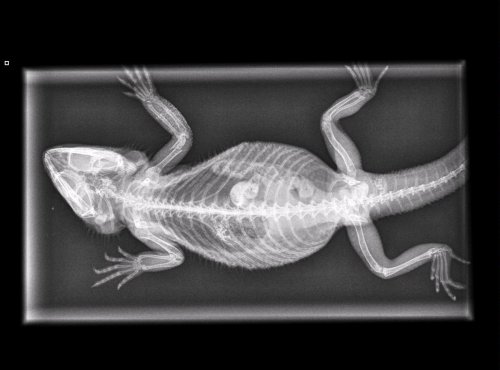mons00n
New Member
In addition to giving him the Repashy, if he has a calcium issue, you need to give him more calcium to help build the bones back up. Liquid calcium is said to be absorbed more easily...you could use calcium sandoz or calcium gluconate. I'm not a vet...I'm just going by experience...but leg grabbing has never been reported to be a sign of retardation in chameleons that I know of...its been seen as a sign of a calcium imbalance.
Thanks for the replies kinyonga and all, I do appreciate it. Could you describe the behavior of these chameleons with calcium imbalances in more in detail? The reason I ask is because Kepler grabs his legs while climbing/walking, and does not let go - so it's like he can't feel that he has his own front legs. From my recollection those chameleons with calcium problems were grabbing their legs for some sort of support since their bones were weak/misformed.
Members here and breeders (Tiki) alike have told me that my supplement regimen is spot on. The herp vet felt every bone in his body concluding that they had no problems as well. All of this evidence is pointing towards something other than supplement deficiencies. It seems to me from his behavior that the nerve endings in his forearms are dead. When I attempt to assist him sometimes it only takes a slight touch on his clamped foot for him to let go. Other times he clinches on tighter from what seems like fear of falling.
My next thought process led me to the size of his cage. He currently resides in a 'medium' 16x16x29" screen enclosure - which I have been told will work for him up until he's about one year old. I have two major vines in with his large umbrella plant giving him what I consider ample room to walk around. During the day when he's looking for food (before feeding), or after times when he's stressed (after the aquazamp mists him - he hates it, so I'll be getting a raindome at the show) he ends up doing a lot of crawling on the ceiling and walls of the enclosure. With the reptile show coming up in about 2 weeks I was considering the purchase of an x-large (24x24x36") enclosure. I am not 100% sure on this, but it seems that he only gets to grabbing himself when he's in a stressful situation, or when he's in a hurry (hunting). So if cramped living quarters was the problem then a larger enclosure could do nothing but help, what are your thoughts on this?













